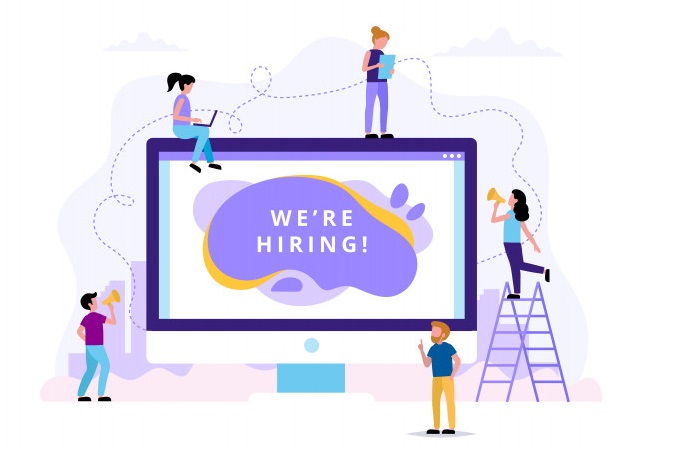Hiring from within your company makes sense since new hires are part of your staff and understand your culture and policies nicely. But despite the advantages of internal recruiting, relying on promotions and lateral occupation motions may have adverse side-effects. Recruiting new employees, whether it is remote hiring or direct hiring, always needs to be done carefully because the operations of the business depend on it.
Listed below are eight benefits and disadvantages of inner recruiting and the best way to Make Sure that when You’re hiring, your procedure works:
Benefits of internal recruiting
Hiring inner candidates could be more effective than recruiting since it could:
Reduce time to employ
When recruiting, hiring teams locate candidates (either via sourcing or occupation posting), assess them, if all works well, convince them to join their business. All of that takes time. Conversely, internal applicants happen to be a part of your office, or so the time you will need to discover and engage these candidates is less. It is also easier to check internal candidates since:
- They’re prescreened for a civilization match.
- Their track record is readily accessible and available anytime.
- They might not always require complete interviews with supervisors (by way of instance, if they’re moving inside their section, the department mind knows the candidate).
These reduce time spent on every hiring phase and your general time to employ. You will be able to find the perfect match for your company instantly.
Shorten Onboarding Times
Everybody requires a while to adapt to another function, but inner hires are faster to onboard than outside hires. That is because they:
- Know the way your organization operates and nearly all of your policies and policies.
- May help familiarize with individuals in their brand new group, particularly in smaller companies.
- May already understand the material and context of the new roles should they move within precisely the same group or into a similar person (for instance, a sales partner becoming a category manager).
Price Less
Research has proven that topical hiring may price 1.7 times greater than inner hiring. This is because if hiring from inside, you usually don’t have to:
- Post advertisements on job boards. It’s simple to notify internal candidates concerning job openings via email or your own business’s internal newsletter. You might also set printed job advertisements on a bulletin board, even if all of your employees work in 1 spot.
- Subscribe to restart databases. Rather than sourcing passive candidates on resume databases, then request supervisors about their staff members or start looking in your HRIS to discover colleagues who may fit your receptive roles.
- Pay for wallpapers checks. Chances are you already have ran background checks to internal candidates once you initially hired them. Additionally, you know whether they are in good reputation according to their supervisor’s input or employee documents. This is important to keep a comprehensive file about your employees all the time. You may not know when it will be useful.
Strengthen Employee Participation
Marketing from within sends a message that you respect your employees and wish to spend them. Giving employees more chances to progress their own careers, as well as letting them proceed to additional same-level places which will interest them, is very good for morale: workers who change jobs grow professionally, and many others understand that they might have similar chances later on. This helps to construct a culture of confidence that enhances employee retention and engagement.
Cons Of Internal Recruiting
Despite all of the merits of internal recruiting, there are a number of things to remember. Selecting from within may:
Create bitterness among workers and supervisors
Employees that have been considered for a job could feel resentful when a colleague or outside candidate is finally hired. Also, supervisors tend to be uncomfortable losing fantastic team members and might even go so far as to interfere with the transfer or marketing procedure.
Leave a gap in your current workforce
When you encourage a person to fill an open place, their previous place becomes vacant. This usually means that a collection of promotions and moves may backfire, which could interrupt your business operations.
This is because employees can get too comfortable with the way things have been done and struggle to spot inefficiencies and experiment with new ways of working. Establish a process that can be followed properly to boost performance. This will serve as the employees’ guide to accomplish things or even excel it.
- Have a transparent procedure. Make sure the candidates recognize your hiring procedure and the reason why they weren’t nominated. It will help if you give them interview feedback or pointers on what skills they might need to develop to be successful in the future.
- Train managers to prepare their team members’ career courses. Help supervisors consider potential career moves to their staff members and request them to get involved in formulating your business’ run program. In that way, if a position opens, then you can instantly seek advice from your plan to determine which employee could possibly be a fantastic fit.
- Avoid conveying an opening in the event that you currently have a candidate in mind. Communication an open function usually means that you simply give workers expect they may be hired for this particular function. However, if hiring teams prefer a specific candidate, it is ideal for reaching them out straight first rather than encouraging other people to employ.
- Utilize a balanced mixture of external and internal recruitment. Every time that you would like to fill out a position, pick whether to recruit externally, internally or both. Base that decision on the job demands and the abilities that your existing workers have in addition to your firm’s requirements to get a civilization include.
However, at the end of the day, if you are concentrated on internal versus outside recruiting, it is important to plan your hiring process to ensure reasonable and efficient recruitment. Utilize screening examinations and structured interviews, and that helps you evaluate candidates objectively and communicate well with each candidate. These practices can allow you to make decent hiring decisions and may also build confidence in your hiring process.








